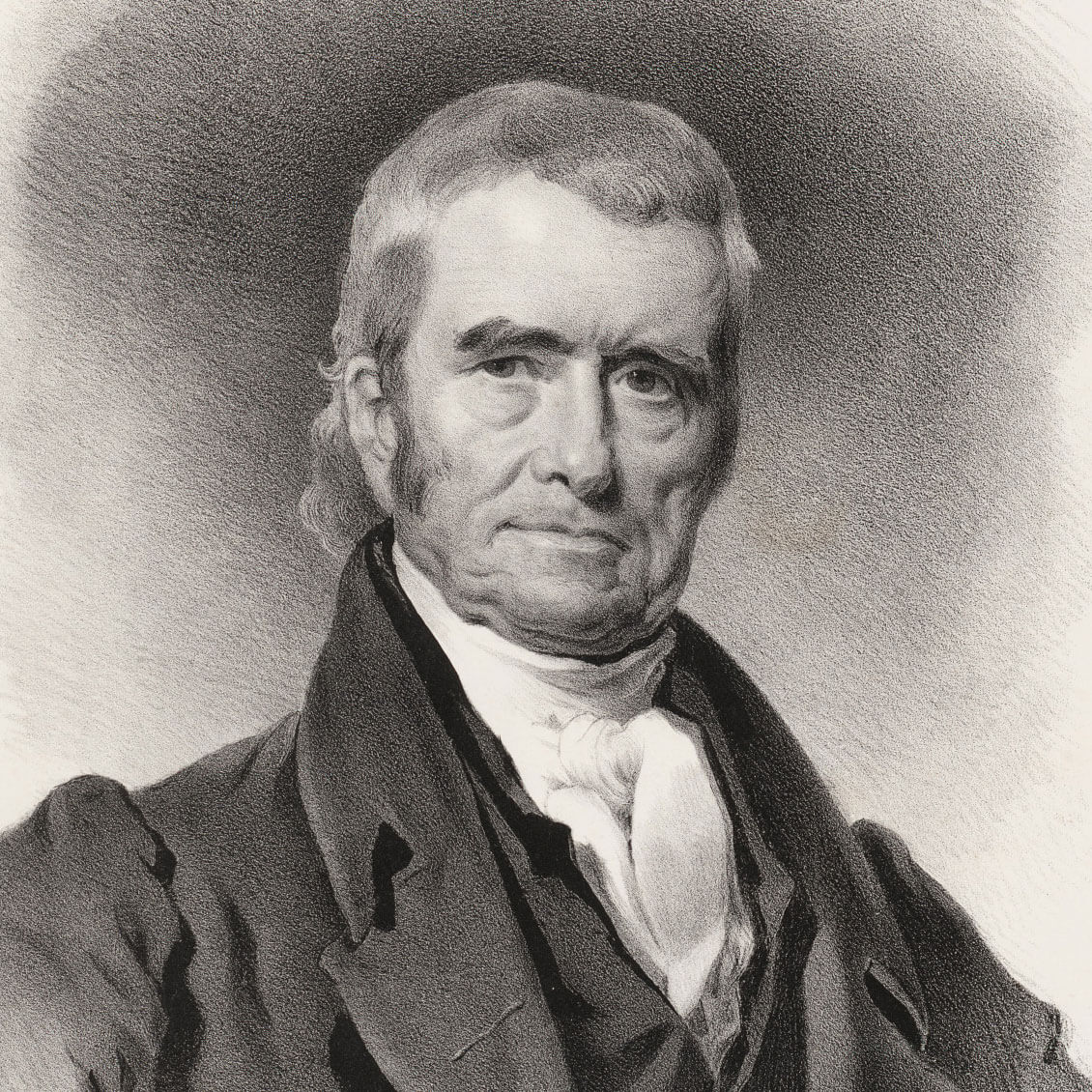Chief Justice Marshall’s First Dissent
Chief Justice Marshall’s first and only dissent in Ogden v. Saunders (1827).
“We have taken a different view of the very interesting question which has been discussed with so much talent as well as labor at the bar, and I am directed to state the course of reasoning on which we have formed the opinion that the discharge pleaded by the defendant is no bar to the action.” —Chief Justice John Marshall, 1827
Summary
Saunders, a citizen of Kentucky, demanded payment for services based on an 1806 contract he had entered with Ogden, a citizen of Louisiana living in New York. Ogden, however, defaulted and claimed bankruptcy under an 1801 New York bankruptcy law. The case was argued twice before the Supreme Court, in 1824 and 1827. The justices were evenly divided in 1824 due to Justice Todd’s absence, thus it was ordered that case be reargued for the full Court. The parties were represented by exceptional advocates—Saunders was represented by Daniel Webster and Ogden was represented by Henry Clay. The issue before the Supreme Court was if the states were allowed to pass their own bankruptcy statues. Bushrod Washington wrote the majority opinion for a divided Court and held that states could pass their own banking laws and, therefore, the New York law did not violate the Contracts Clause of the U.S. Constitution. Chief Justice John Marshall wrote a dissenting opinion in the case which included several key arguments. The central argument was that the Constitution’s Contracts Clause gave the federal legislature, Congress, complete authority over bankruptcy laws because the states had delegated that authority to the federal government. He was joined in his dissent by Justices Gabriel Duvall and Joseph Story.
“The provision of the constitution is, that ‘no State shall pass any law’ ‘impairing the obligation of contracts’.” —Chief Justice John Marshall, 1827
Justice Marshall determined that several prior decisions created the precedent the Court should be using to evaluate contract decisions. The intentions of a contract entered by two or more private persons must be honored under the terms understood by those who entered the contract, and those terms must not be ignored, or extended to something other than what was originally agreed upon. Additionally, Marshall argued that the Constitution erases the “lines of separation” between states and power was ceded to federal government authorities to enforce the terms of the contract, or its remedies, as determined by the Constitution or prior court decisions.
“Yet, when we consider the nature of our Union; that it is intended to- make us, in a great measure, one people, as to commercial objects, that, so far as respects the intercommunication of’ individuals, the lines of separation between States are, in many respects, obliterated, it would not be matter of surprise, if, on the delicate subject of contracts once formed, the interference of State legislation should be greatly abridged, or entirely forbidden.” —Chief Justice John Marshall, 1827
As a result, Marshall argued that the principle of federalism affirms that states cannot create laws that interfere with the obligations created by private contracts and new state laws cannot erase conflicting terms and conditions of a contract entered before its passage. In short, Marshall’s argument was that citizens need to know their contracts will be upheld uniformly, even if they’re from different states.
Discussion Questions
- What is the main reason Chief Justice Marshall dissented in Ogden v. Saunders, 25 U.S. 213 (1827)?
- Why does Chief Justice Marshall argue that according to the Constitution, “the lines of separation between States are, in many respects, obliterated”?
Sources
Feature Image: Chief Justice John Marshall. Collection of the Supreme Court of the United States.
Gerard N. Magliocca, Washington’s Heir: The Life of Bushrod Washington, (Oxford University Press, 2022).
